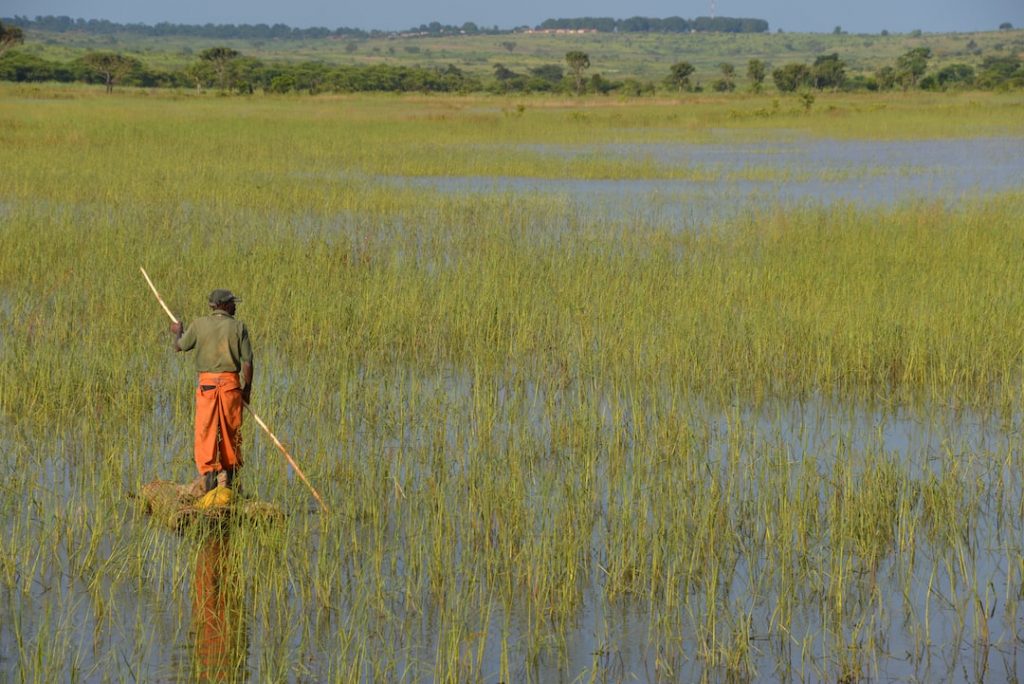Angola, located on the west coast of southern Africa, is a country rich in natural resources. From mineral deposits to abundant water resources, diverse wildlife, and fertile agricultural land, Angola has a wealth of natural assets that contribute significantly to its economy. This article will provide an in-depth overview of Angola’s natural resources, highlighting the types of resources found in the country and their importance to the nation’s economic development.
Summary
- Angola is rich in natural resources, including minerals, biodiversity, water, agriculture, forests, oil and gas, renewable energy, and coastal resources.
- Angola has significant mineral deposits, including diamonds, iron ore, copper, gold, and phosphates, among others.
- Angola’s biodiversity and wildlife are diverse and include elephants, lions, giraffes, and many other species.
- Angola has abundant water resources, including rivers, lakes, and aquifers, which are essential for agriculture, industry, and human consumption.
- Angola’s agricultural resources are vast and include crops such as coffee, cotton, maize, and cassava, as well as livestock such as cattle, goats, and pigs.
Angola’s Rich Mineral Deposits
Angola is known for its vast mineral deposits, which have played a crucial role in the country’s economic growth. The most significant minerals found in Angola include diamonds, oil, gold, iron ore, copper, and phosphates. Diamonds are particularly abundant in Angola and have been a major source of revenue for the country. Angola is one of the world’s top diamond producers and has significant diamond reserves.
In addition to diamonds, Angola also has substantial oil reserves. Oil production has been a key driver of economic growth in Angola, with the country being one of Africa’s top oil producers. The revenue generated from oil exports has allowed Angola to invest in infrastructure development and other sectors of the economy.
Biodiversity and Wildlife in Angola
Angola is home to a diverse range of wildlife and boasts rich biodiversity. The country’s varied ecosystems support a wide array of plant and animal species. Angola’s wildlife includes elephants, lions, giraffes, zebras, antelopes, and numerous bird species. The country’s national parks and protected areas provide habitats for these animals and contribute to the conservation efforts in the region.
The biodiversity and wildlife in Angola are not only important for ecological reasons but also for tourism and economic development. Wildlife tourism has the potential to attract visitors from around the world, generating revenue for local communities and contributing to job creation. Protecting Angola’s biodiversity is crucial for sustainable development and ensuring the long-term viability of its natural resources.
Abundant Water Resources in Angola
Angola is blessed with abundant water resources, including rivers, lakes, and underground aquifers. The country’s major rivers, such as the Cuanza, Zambezi, and Okavango, provide water for irrigation, hydroelectric power generation, and transportation. Angola’s lakes, such as Lake Dilolo and Lake Luanda, are important sources of freshwater for local communities.
Water resources play a vital role in Angola’s economy, particularly in agriculture and energy production. Irrigation systems powered by water from rivers and lakes support agricultural activities, enabling farmers to grow crops and raise livestock. Hydroelectric power plants harness the energy of flowing water to generate electricity, meeting the country’s energy needs and supporting industrial development.
Angola’s Agricultural Resources
Angola has fertile agricultural land that supports a variety of crops. The country’s agricultural resources include maize, cassava, beans, coffee, tea, tobacco, and various fruits and vegetables. Agriculture is a significant sector of the Angolan economy, employing a large portion of the population and contributing to food security.
The agricultural sector in Angola has the potential for further growth and development. With proper investment in infrastructure, technology, and training, Angola can increase its agricultural productivity and reduce its reliance on food imports. This would not only boost the economy but also enhance food security and improve the livelihoods of rural communities.
Angola’s Forests and Timber Resources
Angola is home to extensive forests that cover a significant portion of its land area. The country’s forests are rich in timber resources, including hardwoods such as mahogany and teak. Timber production is an important industry in Angola, providing employment opportunities and contributing to economic growth.
The forests of Angola also play a crucial role in mitigating climate change by absorbing carbon dioxide from the atmosphere. Protecting these forests is essential for preserving biodiversity and maintaining the ecological balance. Sustainable forest management practices, such as selective logging and reforestation, can ensure the long-term viability of Angola’s timber resources.
Angola’s Oil and Gas Reserves
Angola is one of Africa’s leading oil and gas producers, with significant reserves of both resources. The country’s offshore oil fields have attracted international investment and have been a major source of revenue for Angola. Oil and gas production have contributed to economic growth, infrastructure development, and job creation in the country.
However, Angola faces challenges in managing its oil and gas resources sustainably. The sector has been criticized for its lack of transparency and accountability, leading to issues such as corruption and environmental degradation. Addressing these challenges and implementing effective governance mechanisms is crucial for ensuring the long-term sustainability of Angola’s oil and gas industry.
Angola’s Renewable Energy Potential
Angola has significant potential for renewable energy development, particularly in solar, wind, and hydropower. The country’s abundant sunshine and strong winds make it ideal for solar and wind energy generation. Hydropower projects, such as the Lauca Dam on the Kwanza River, have the potential to provide clean energy to meet Angola’s growing electricity demand.
Investing in renewable energy can help Angola diversify its energy sources, reduce its dependence on fossil fuels, and mitigate climate change. Renewable energy projects also have the potential to create jobs and stimulate economic growth. By harnessing its renewable energy potential, Angola can transition to a more sustainable and environmentally friendly energy system.
Natural Resources in Angola’s Coastal Areas
Angola’s coastal areas are rich in natural resources, including fish stocks, offshore oil reserves, and minerals such as phosphates. The country’s coastline stretches over 1,600 kilometers along the Atlantic Ocean, providing access to valuable marine resources.
The fishing industry is an important sector in Angola’s economy, providing employment opportunities and contributing to food security. The country’s offshore oil reserves have attracted international investment and have been a significant source of revenue. Phosphates, used in fertilizer production, are also found in Angola’s coastal areas and contribute to the agricultural sector.
Challenges and Opportunities in Angola’s Natural Resource Management
Angola faces several challenges in managing its natural resources sustainably. These challenges include issues such as corruption, lack of transparency, inadequate infrastructure, and limited capacity for resource management. Addressing these challenges is crucial for ensuring the long-term viability of Angola’s natural resources and promoting sustainable economic development.
However, Angola also has opportunities to improve its natural resource management. The government can invest in infrastructure development, strengthen governance mechanisms, promote transparency and accountability, and enhance capacity building efforts. By adopting sustainable practices and policies, Angola can maximize the benefits of its natural resources while minimizing their negative impacts.
Angola is blessed with a wide range of natural resources that contribute significantly to its economy. From mineral deposits to abundant water resources, diverse wildlife, fertile agricultural land, forests, oil and gas reserves, renewable energy potential, and coastal resources, Angola has a wealth of assets that can drive economic growth and development.
However, managing these resources sustainably is crucial for ensuring their long-term viability and avoiding negative impacts such as environmental degradation and social inequality. By addressing challenges such as corruption and lack of transparency, investing in infrastructure and capacity building, and promoting sustainable practices, Angola can maximize the benefits of its natural resources while safeguarding them for future generations.
FAQs
What are the natural resources of Angola?
Angola is rich in natural resources such as oil, diamonds, gold, iron ore, copper, and phosphates.
Where is oil found in Angola?
Oil is mainly found in offshore oil fields in the Atlantic Ocean, particularly in the Cabinda province.
What is the significance of Angola’s oil reserves?
Angola is the second-largest oil producer in sub-Saharan Africa and the seventh-largest oil producer in the world. Oil exports account for over 90% of Angola’s total export revenue.
Where are diamonds found in Angola?
Diamonds are mainly found in the provinces of Lunda Norte, Lunda Sul, and Malanje.
What is the significance of Angola’s diamond reserves?
Angola is the world’s fifth-largest diamond producer and the largest in Africa. Diamond exports account for a significant portion of Angola’s total export revenue.
Where is gold found in Angola?
Gold is mainly found in the provinces of Huíla, Cunene, and Cuando Cubango.
What is the significance of Angola’s gold reserves?
Angola’s gold reserves are relatively small compared to other African countries, but gold mining has the potential to contribute significantly to the country’s economy.
Where is iron ore found in Angola?
Iron ore is mainly found in the provinces of Kwanza Norte and Kwanza Sul.
What is the significance of Angola’s iron ore reserves?
Angola’s iron ore reserves are relatively small, but the government is actively seeking investment to develop the sector and increase production.
Where is copper found in Angola?
Copper is mainly found in the provinces of Cabinda and Lunda Norte.
What is the significance of Angola’s copper reserves?
Angola’s copper reserves are relatively small, but the government is actively seeking investment to develop the sector and increase production.
Where are phosphates found in Angola?
Phosphates are mainly found in the province of Cabinda.
What is the significance of Angola’s phosphate reserves?
Angola’s phosphate reserves are relatively small, but the government is actively seeking investment to develop the sector and increase production. Phosphates are used in the production of fertilizers, which could contribute to Angola’s agricultural sector.


